Vanessa1402
ACCESS: Confidential
- Joined
- 10 April 2021
- Messages
- 136
- Reaction score
- 67
Can you post that here?But I've seen 90 nm range cited for SM-2MR (from the US Navy Fact File, so apparently official).
Is that SM-2 with or without booster?
Can you post that here?But I've seen 90 nm range cited for SM-2MR (from the US Navy Fact File, so apparently official).
That's SM2 Block III/IIIA/IIIB, which means no booster.Can you post that here?But I've seen 90 nm range cited for SM-2MR (from the US Navy Fact File, so apparently official).
Is that SM-2 with or without booster?
Asides from the land-based Terrier thread, I don’t think soIs there an equivalent thread in this sub-forum for the RIM-2 Terrier?
I was thinking about creating a Terrier-LEAP thread.Asides from the land-based Terrier thread, I don’t think soIs there an equivalent thread in this sub-forum for the RIM-2 Terrier?

A Russian spy ship parked in international waters off Kauai for several days has delayed a Missile Defense Agency missile test, officials said.
U.S. Pacific Fleet at Pearl Harbor said in a statement that it “is aware of the Russian vessel operating in international waters in the vicinity of Hawaii, and will continue to track it through the duration of its time here. Through maritime patrol aircraft, surface ships and joint capabilities, we can closely monitor all vessels in the Indo-Pacific area of operations.”
It was not immediately clear if the Russian vessel is broadcasting an automatic identification system, or AIS, signal. If it is, the ship’s presence — beyond Pacific Fleet’s significant detection capabilities — would be a clear indicator of the ship’s presence to possibly interfere with the missile test.
That test could be for an SM-6 intercept of a replicated cruise missile threat. The Missile Defense Agency could not be immediately reached for comment this morning.
thank you, those are very good sourceI have here several Raytheon patents which are clearly to do with the SM-2 Block IV variant:
The patent to do with missile fusing appears to be related to the cancelled SM-2 Block IVA version, the second maybe associated with all Block IV versions, the third patent is probably to do with the planar-array antenna that replaced the original conical-scan antenna and the last would appear to be to do with interfacing with the launch vessel.
Would Dual II use the new 21” body?MDA with Navy July 24 tested SM-6 Dual II, fired four from Burke destroyer Ralph Johnson off Hawaii, presuming to test if effective in defending a carrier against the Chinese anti-carrier ballistic missiles DF-21 and 26
" one target was successfully intercepted. At this time, we cannot confirm the second target was destroyed"
Anyone know the difference between the SM-6 Dual I and Dual II?
From <https://www.mda.mil/news/21news0012.html>
Would Dual II use the new 21” body?MDA with Navy July 24 tested SM-6 Dual II, fired four from Burke destroyer Ralph Johnson off Hawaii, presuming to test if effective in defending a carrier against the Chinese anti-carrier ballistic missiles DF-21 and 26
" one target was successfully intercepted. At this time, we cannot confirm the second target was destroyed"
Anyone know the difference between the SM-6 Dual I and Dual II?
From <https://www.mda.mil/news/21news0012.html>
However I wonder if a 21" version of the SM-6 would be developed as it would not only have a much greater range it would have a larger warhead and more capable seeker due to a wider antenna and more volume for seeker-electronics.Would Dual II use the new 21” body?MDA with Navy July 24 tested SM-6 Dual II, fired four from Burke destroyer Ralph Johnson off Hawaii, presuming to test if effective in defending a carrier against the Chinese anti-carrier ballistic missiles DF-21 and 26
" one target was successfully intercepted. At this time, we cannot confirm the second target was destroyed"
Anyone know the difference between the SM-6 Dual I and Dual II?
From <https://www.mda.mil/news/21news0012.html>
No, the 21-inch version is SM-6 Block 1B. SM-6 Dual II seems to be a simple upgrade of the Dual I version, which enabled both air and missile defense in a single missile.
Why put a larger warhead on it? That would just take away the range you got yourself with the larger motor.However I wonder if a 21" version of the SM-6 would be developed as it would not only have a much greater range it would have a larger warhead and more capable seeker due to a wider antenna and more volume for seeker-electronics.Would Dual II use the new 21” body?MDA with Navy July 24 tested SM-6 Dual II, fired four from Burke destroyer Ralph Johnson off Hawaii, presuming to test if effective in defending a carrier against the Chinese anti-carrier ballistic missiles DF-21 and 26
" one target was successfully intercepted. At this time, we cannot confirm the second target was destroyed"
Anyone know the difference between the SM-6 Dual I and Dual II?
From <https://www.mda.mil/news/21news0012.html>
No, the 21-inch version is SM-6 Block 1B. SM-6 Dual II seems to be a simple upgrade of the Dual I version, which enabled both air and missile defense in a single missile.
However I wonder if a 21" version of the SM-6 would be developed as it would not only have a much greater range it would have a larger warhead and more capable seeker due to a wider antenna and more volume for seeker-electronics.Would Dual II use the new 21” body?MDA with Navy July 24 tested SM-6 Dual II, fired four from Burke destroyer Ralph Johnson off Hawaii, presuming to test if effective in defending a carrier against the Chinese anti-carrier ballistic missiles DF-21 and 26
" one target was successfully intercepted. At this time, we cannot confirm the second target was destroyed"
Anyone know the difference between the SM-6 Dual I and Dual II?
From <https://www.mda.mil/news/21news0012.html>
No, the 21-inch version is SM-6 Block 1B. SM-6 Dual II seems to be a simple upgrade of the Dual I version, which enabled both air and missile defense in a single missile.
Do you have a link to any information on this?It's already in development. It appears that the seeker will actually be unchanged, resulting in a sort of necked down shape.
Do you have a link to any information on this?It's already in development. It appears that the seeker will actually be unchanged, resulting in a sort of necked down shape.

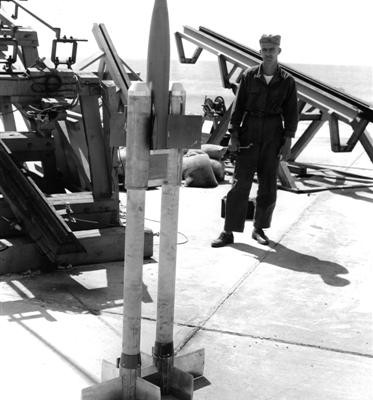
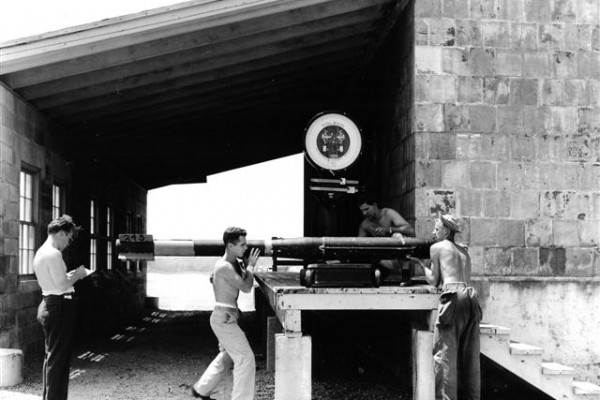
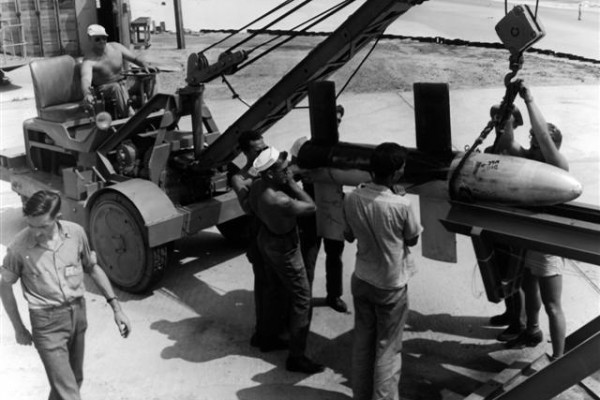
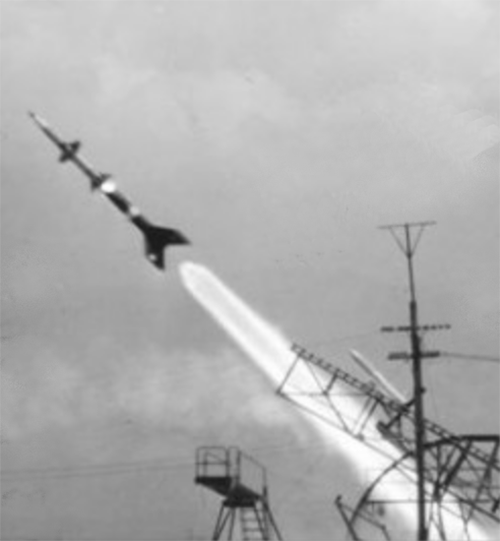

Ironic, isn't it? The most advanced shipborbe SAM was essentially born by accident.From there a supersonic control test missile was developed (STV). This would prove so viable it became Terrier
The USN in working on the earlier project Gorgon came to the conclusion pretty early on that shipboard missiles had to be solid fuel. Liquid fuel missiles were simply to volatile and dangerous for use onboard ships. Thus, all the early USN SAM projects--Little Joe (quick and dirty to get something operational now), Lark (a bit more sophisticated to get something that would work at a minimal level), and then Bumblebee (a properly thought out design that would really meet the necessary requirements) did not use liquid fuel. These three represent the USN's wartime SAM development programs.Ironic, isn't it? The most advanced shipborbe SAM was essentially born by accident.From there a supersonic control test missile was developed (STV). This would prove so viable it became Terrier
I wonder, how would USN SAM developed if STV was made, say, with liquid-fuel rocket? And not suitable for conversion into missile? No Terrier, no Tartar, no Standard. What would be instead? More Talos, combined with Zeus/Arrow guided 8-inch shells?
The end goal of project Bumblebee WAS the Talos missile.More Talos,
Er... Lark was liquid-fuel powered.Thus, all the early USN SAM projects--Little Joe (quick and dirty to get something operational now), Lark (a bit more sophisticated to get something that would work at a minimal level), and then Bumblebee (a properly thought out design that would really meet the necessary requirements) did not use liquid fuel
Attempt at universal missile.Why put a larger warhead on it? That would just take away the range you got yourself with the larger motor.
And, that was one of its downfalls. Lark is contemporary with Gorgon in many respects too. One interesting aspect of Gorgon was it was the project that made the first attempt to use an Air-to-air missile against a flying target. The guidance was CLOS using a television camera and it was found the operator couldn't control the missile due to the closing speed with the target. Thus, the need for radar guidance was solidified.Er... Lark was liquid-fuel powered.Thus, all the early USN SAM projects--Little Joe (quick and dirty to get something operational now), Lark (a bit more sophisticated to get something that would work at a minimal level), and then Bumblebee (a properly thought out design that would really meet the necessary requirements) did not use liquid fuel
There was the RIM-50 Typhon LR.The end goal of project Bumblebee WAS the Talos missile.More Talos,
The end goal was a working SAM system for shipboard use that could--at least initially when Bumblebee started--could reliably take down an aircraft at 10 miles up to 35,000 feet. Bumblebee was a huge Navy program at the time. It resulted in many advances in missile design that are still in use today.The end goal of project Bumblebee WAS the Talos missile.More Talos,
4 mach BabyVideo describing the various aspects of the off-range launch, control, and evaluation of the high performance AQM-37C(EP) Target to be engaged by SM-2 Block IV over White Sands Missile Range. Video developed by George Helfrich and produced by JHU APL, 22 July 1992. Provides a description of how the target was to be launched from a Navy F-4 aircraft at a speed of Mach 1.5 and an altitude of 50,000 ft. over Albuquerque NM and then climb and accelerate to desired speed and altitude for intercept over White Sands Missile Range.
Very interesting! It's clear that the missile launched was a Block IV SM-2 also I wonder how many F-4N's are left since the video was made as most of the surviving ones after retirement in the mid-80s were expended as QF-4N missile-targets.4 mach BabyVideo describing the various aspects of the off-range launch, control, and evaluation of the high performance AQM-37C(EP) Target to be engaged by SM-2 Block IV over White Sands Missile Range. Video developed by George Helfrich and produced by JHU APL, 22 July 1992. Provides a description of how the target was to be launched from a Navy F-4 aircraft at a speed of Mach 1.5 and an altitude of 50,000 ft. over Albuquerque NM and then climb and accelerate to desired speed and altitude for intercept over White Sands Missile Range.
I wonder how many F-4N's are left since the video was made as most of the surviving ones after retirement in the mid-80s were expended as QF-4N missile-targets

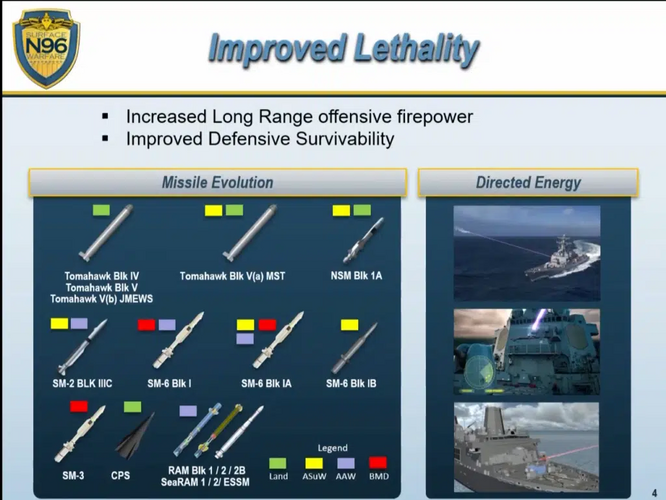
To me, the unexpected revelation here is that SM-6 Block 1B, the new version with 21-inch propulsion stack, is shown as strictly an ASuW weapon. Maybe just matter of doctrine? (SM-6 Blk IA will do everything necessary in the AAW role)
To me, the unexpected revelation here is that SM-6 Block 1B, the new version with 21-inch propulsion stack, is shown as strictly an ASuW weapon. Maybe just matter of doctrine? (SM-6 Blk IA will do everything necessary in the AAW role)
The Navy has been consistent in this in its graphics on the program. I think this will be a much faster weapon capable of lofting a lot higher than the SM-61A and as such will be an extended range strike weapon. Could they use the same motor as an upgrade to the SM-61A? Probably and perhaps that could be one path they take towards hypersonic defense.
